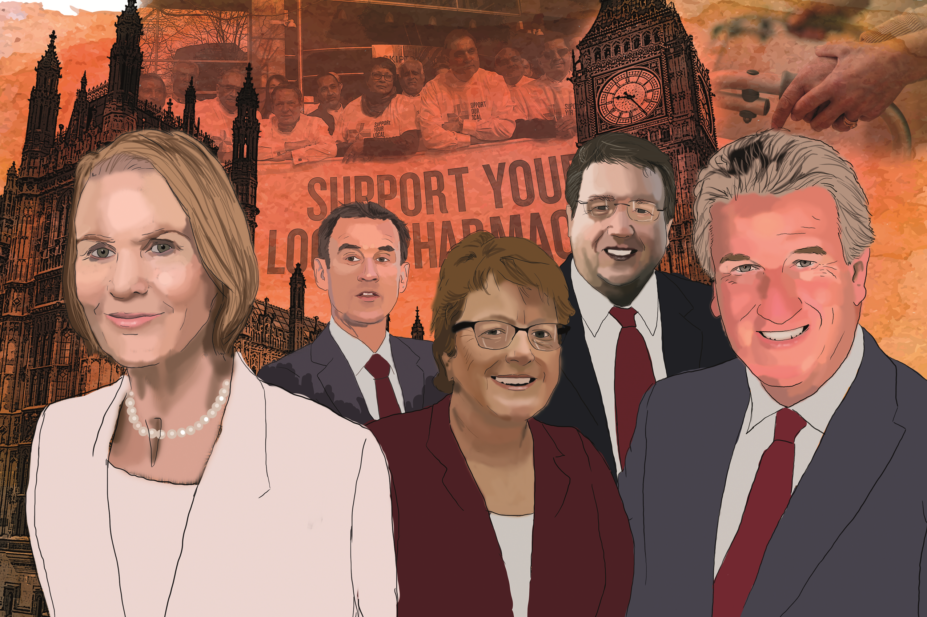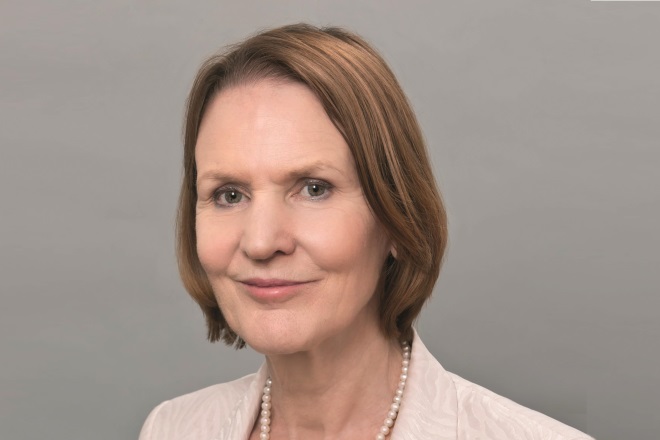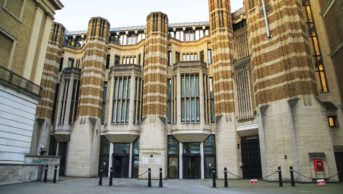
Javier Maria Trigo Gonzalez / MAG / Shutterstock.com
A timeline of the pharmacy funding cuts can be found here.
On 17 December 2015, the Department of Health (DH) sent a letter to Sue Sharpe, chief executive of the Pharmaceutical Services Negotiating Committee (PSNC), announcing that there would be a 6% cut to funding for the community pharmacy contractual framework for England in 2016–2017, and that these cuts were likely to be implemented from October 2016.
The letter, signed by Keith Ridge, chief pharmaceutical officer, and Will Cavendish, director general of innovation, growth and technology, was copied to Pharmacy Voice (PV), an association of trade bodies representing community pharmacy owners, the Royal Pharmaceutical Society (RPS) and the Association of Pharmacy Technicians, the professional leadership bodies for pharmacists and pharmacy technicians, respectively, as well as the regulator for pharmacy in Great Britain, the General Pharmaceutical Council. All of the organisations, the letter said, would be involved in consultations on the proposals through to 24 March 2016, along with patient and public groups, because of their “potential impact”.
The consultation would also address how best to introduce a Pharmacy Integration Fund to help transform how pharmacists operate in the NHS, widening the use of ‘hub and spoke’ dispensing and new models of ordering and collecting prescription medicines, including online ordering and home delivery. The letter also highlighted that in some parts of England there were “more pharmacies than are necessary to maintain good access”, with 40% in a cluster of three or more within ten minutes’ walk, although the DH added that pharmacies in rural or deprived areas would be protected from the brunt of the cuts through a new pharmacy access scheme.
The letter and the extent of [the cuts] and the timetable was not expected
While an increase in funding had not been anticipated, with the NHS as a whole having to find £20bn worth of efficiency savings, the news of the cuts was a shock to the recipients of the letter.
Unpleasant surprise
“We hadn’t had prior briefing on any of it,” says Elizabeth Wade, director of policy at PV. “The fact that there was some scrutiny of spending in community pharmacy wasn’t a huge surprise, but the letter and the extent of [the cuts] and the timetable was not expected.”

Source: Courtesy of Pharmacy Voice
Elizabeth Wade, director of policy at Pharmacy Voice, says there is “deep frustration” from within the community pharmacy sector that there was no dialogue or discussion about the ideas the sector itself had to make savings and efficiencies across the system as a whole
Sandra Gidley, chair of the RPS English Pharmacy Board, says, in hindsight, there were “little warnings”. In particular, she remembers a Treasury document[1]
that described boosting competition to reduce bills for hard-working families, which focused on making it easier to switch telecoms, banks and energy suppliers. Unusually, it mentioned pharmacy, expressing a desire to “encourage competition and innovation, and facilitate online, delivery to door and click and collect, pharmacy and prescription services” to “save time for working people”.
The Department of Health document was pretty much a fait accompli in terms of the outcome of it
“We were being linked to the bad boys,” says Gidley. “At the time I thought it a bit odd, but didn’t think any wider.” But it later became clear, through conversations with Alistair Burt, the health minister at the time, that the cuts were being driven entirely by the Treasury. “There was no way that the cuts were going to be avoided, but if anyone came up with a workable solution of how to save the money in any other way then they would listen,” she says.
Other than outlining the extent of the cuts, the letter contained little detail on the specifics of how they would be implemented. At the outset, pharmacy bodies “naively thought that we would be involved in some sort of negotiation, but that wasn’t the case”, says Gidley.
“[The DH document] did feel like something that was issued as a consultation, but actually was pretty much a fait accompli in terms of the outcome of it,” says Wade.
She adds that there is “deep frustration” from within the community pharmacy sector that there was no dialogue or discussion about the ideas the sector itself had in helping to make some of the required savings and efficiencies across the system as a whole.
Gidley remembers that the government presented its ideas in a PowerPoint presentation, but those attending were not given any supporting materials and were not allowed a copy of the presentation. The presentation was then revised before being published at the end of January 2016. “There were a couple of events organised by DH [over the next few months] at which we were able to express our thoughts for wider discussion on things like the access scheme,” she adds.
The consultation was originally due to end on 24 March 2016, but was extended for most of the proposals by two months until 24 May 2016. But with the Brexit referendum result and the subsequent government reshuffle, it was put on hold over the summer.
Potential closures
From the outset, the government made clear that it wanted a reduction in the number of pharmacies, but the extent of how many they expected to close was signalled in January 2016 when Burt met with the All-Party Pharmacy Group (APPG), a cross-party group of MPs with an interest in pharmacy. Burt told the APPG that between 1,000 and 3,000 pharmacies (up to one in four) could close as a result of the planned cuts.
No evidence to show where these figures came from was ever published, nor any analysis on what the impact of the closures would be on patients and other services. Just one month later, Burt distanced himself from these figures, telling The Pharmaceutical Journal: “I have no expectations in terms of the number of closures that might happen.” He added: “We just don’t know what the situation will be. There is no government plan for any closures; it is not a directive.”
At the APPG meeting, Burt also hinted that the 6% cut to the 2016–2017 budget was not a one-off cut and could be followed by further funding cuts in the future.
According to Wade, the main question that pharmacy has been asking the DH is “what is the evidence base and the analysis upon which they have decided that there is this capacity to deliver and maintain services with potentially fewer pharmacies?”.
“We haven’t really got a good answer to that question,” she adds.
When the government’s impact analysis was published on 20 October 2016[2]
, alongside full details of the cuts[3]
, it verified that the government had no way of knowing what the impact of the cuts will be in terms of closures. “There is no reliable way of estimating the number of pharmacies that may close as a result of this policy,” the document says.
“We recognise the potential for some pharmacies to take the decision to close as a result of the changes. We cannot estimate this as we do not hold individual pharmacy level data and cannot know the business decisions pharmacies will take.”
Pharmacies will have to find other ways of managing with less income even if they can just about stay viable
The number of pharmacies under threat of closure is still unclear, but what is certain is that closures take time and the immediate impact of the cuts is more likely to be seen in terms of reductions in pharmacy staffing, opening hours and service provision.
“Closures will not happen overnight because pharmacies will struggle to survive and try to manage on a reduced budget and hope that their nearest neighbour down the road goes to the wall before they do,” Sharpe told the Local Pharmaceutical Committee annual conference, held in London on 2 November 2016, adding that contractors will also have loyalty to staff, patients and customers.
She added: “Even when pharmacies become unviable, they will not close quickly. They have, particularly the independents, personal guarantees given on leases on premises and those personal guarantees will continue until such point as they can get out of that lease – either if they can transfer it or by coming to the end of the lease term.”

Source: Courtesy of the PSNC
Sue Sharpe, chief executive of the PSNC, says pharmacies considering whether to reduce services or opening hours in the wake of the cuts need to recognise “that the local community is our greatest ally and to do things that punish patients or local authorities is something to be thought about very carefully”
This view is backed up by the findings of a survey that the National Pharmacy Association (NPA), which represents the interests of independent pharmacies, sent to its members after the cuts were announced. Of 250 independent pharmacists surveyed, 76% said they could be forced to reduce services before April 2017 owing to cash flow difficulties, while 54% of respondents said they would probably have to reduce their opening hours, and 86% said they would be likely to cut staff. A total of 86% of respondents said they may have to limit or remove ‘free’ services, such as home delivery of medicines to housebound patients, and most were putting planned investment in service development, premises and staff development on hold.
“Pharmacies will have to find other ways of managing with less income even if they can just about stay viable,” says Wade.
However, Sharpe cautions that individual pharmacies considering whether to reduce services or opening hours in the wake of the cuts “need to do it recognising that the local community is our greatest ally and to do things that punish patients or local authorities is something to be thought about very carefully, particularly given the decision is being mandated by central government”.
Other analyses
On account of the government’s failure to produce evidence early on of what the implications of the budget cuts would be for patients, community pharmacies and other NHS services, the pharmacy sector has had to generate its own data to illustrate the value of community pharmacy.
The PSNC commissioned consultancy firm PricewaterhouseCoopers (PwC) to assess the current value of community pharmacy to the NHS and wider public sector. The analysis[4]
, published in September 2016, shows that community pharmacy provides more in terms of value for money than the funding it receives. PwC looked at 12 services provided by community pharmacy in England in the areas of public health (such as emergency contraception and supervised consumption), self-care support/minor ailments and medicines support (including delivering and managing prescriptions, medicines use reviews and the new medicine service). PwC calculated that the 12 services, some of which were not commissioned but were delivered anyway, provided £3bn in net value during 2015, which is more than the £2.8bn of total funding that community pharmacy receives from the DH.
Wade says: “It was a kind of value proposition for community pharmacy, making the point that by cutting hundreds of millions you are actually reducing the value to the sector by more than that.”
In April 2016, the
PSNC presented the DH with counterproposals
that would provide savings to the NHS without the need for the planned £170m cut to the community pharmacy budget in England – but these were rejected. The PSNC then joined forces with other organisations to develop a ‘Community pharmacy forward view’[5]
to articulate how they believed the contribution of community pharmacy could be enhanced and how it could support the aims of the NHS’s ‘Five year forward view’. The document, produced by PV and the PSNC and endorsed by the RPS, was published at the end of August 2016.
Meanwhile, an independent analysis by information and technology services company IMS Health, published in July 2016, found that 269 pharmacies in England were at “very high risk” as a result of the cuts. There were a total of 2,442 pharmacies at moderate to very high risk, with almost 30% of these pharmacies (1,643) in the London area.
The analysis was based on the gross profit of each pharmacy, taking into account NHS income from prescriptions and the establishment payment, over-the-counter sales and the geographic “clustering” of pharmacies. IMS Health has now modelled the impact of the actual cuts announced in October 2016 on the finances of pharmacies and found that 17.5% more pharmacies are at very high risk.
Jonathan Carney, senior principal in supplier services at IMS Health, says: “While the government has obviously heard the various opinions and strong push back that they had received to the proposed changes, rationalising the various schemes and maintaining a proportion of the establishment fees, having analysed the implemented cuts we believe that it is no better for the pharmacy sector than the original proposal. In fact, we consider that it may put an increased number of pharmacies at risk: under the proposal, some 269 pharmacies were what we considered to be ’very high risk‘, this has increased to 316 [pharmacies].”

Source: Courtesy of IMS Health
Jonathan Carney, senior principal in supplier services at IMS Health, says: “Having analysed the implemented cuts we believe that it is no better for the pharmacy sector than the original proposal”
No reprieve
For a short while it looked like the DH might be having second thoughts. On 5 September 2016, David Mowat, the new minister for community health and care, announced via video link at the RPS annual conference in Birmingham that the cuts would not be implemented in October 2016 as originally planned because he wanted “to make sure that we’re making the correct decision”. It later became apparent that the DH was pushing ahead, having sent a letter to the PSNC on 9 September 2016 outlining the proposed cuts for the remainder of 2016–2017 and for 2017–2018. This was revealed a month later when the PSNC formally rejected the financial settlement on 14 October 2016.
The same day, Mowat announced a pharmacy urgent care pilot, under which patients needing urgent repeat prescriptions will be referred to pharmacies, rather than GPs, by NHS 111. NHS England and NHS 111 will also develop a new approach for referring patients with urgent minor ailments to community pharmacy for advice and medicines, although a formal scheme will not be commissioned.
News of the urgent care pilot was not well received by pharmacy leaders, who suspected that the announcement had been made to draw attention away from the looming cuts to community pharmacy funding. “I was cheesed off because we learned about it from The Sun,” says Gidley.
The PSNC had hoped that the DH would come back with a revised funding package but on 20 October 2016, Mowat announced in the House of Commons that the proposals put to the PSNC on 9 September 2016 would be implemented. Funding for community pharmacy would be cut by 4% for 2016–2017 to £2.687bn, with the cut being made in December 2016, representing a cut of 12% for the final four months of 2016–2017. A further 3.4% cut would then be implemented for 2017–2018, reducing the total funding package to £2.592bn.
This is the first time a funding settlement has been imposed on community pharmacy contractors in England in 15 years. The PSNC did not want to be interviewed about the negotiations, but speaking at the LPC annual conference in November 2016 Sharpe said: “We didn’t think that anyone in government could reasonably expect us to accept an offer that hits so many contractors in urban areas and, through changes in how funding is delivered through the removal of the establishment payment, is going to put the viability of many businesses, which have depended on the consistency of pharmacy funding, in peril.” She added: “Also, if we caved in and accepted this, would they keep coming back for more?”
“It really is bad news for contractors,” says Gidley. “If you are looking for the silver lining, and there is not much of one, as pharmacy bodies we have been working together much more closely and cooperatively and that has to be a good thing for the sector. In the past there has been too much of a divide and rule approach and we have been saying different things.”
Future funding
A collaborative effort by pharmacy bodies achieved a “significant increase in awareness of community pharmacy by getting people thinking much more about what it would mean for them, whether as patients or other healthcare professionals or politicians, if access was significantly damaged,” says Wade. The ‘Support your local pharmacy’ petition, initiated by the NPA, attracted more than 2 million signatures and is believed to be the biggest petition on a health issue ever presented to the prime minister. “Building on that awareness and advocacy base is going to be extremely important in terms of the next phase and making sure we protect the sector,” she says.
In April 2016, NHS England commissioned Richard Murray, director of policy for the King’s Fund, to conduct an independent review of community pharmacy services to make recommendations for “future commissioning models for community pharmacy and the pharmacy workforce”, with the aim of improving value through better integration of pharmacy with other services. The review was published on 14 December 2016[6]
, almost a year to the day that the original announcement about the government’s plans for the sector was made.
Sharpe told the LPC conference in November 2016 that she believed the review may only have been commissioned because the DH was “feeling rather vulnerable to accusations that reference to a service-based future was sounding a little bit hollow” after the PSNC submitted its counterproposals.
The sector is still digesting the recommendations of the review, which include redesigning the medicines use review service, giving community pharmacists a much greater role in the management of patients with long-term conditions, greater use of repeat dispensing and independent prescribing in community pharmacy, and improving digital connectivity to allow registered pharmacy professionals full read and write access to patient medical records.
Gidley suggests that it’s now time “to put some meat on the bones [of the review] and really start having sensible discussion about the sorts of things that pharmacists working in the community can do”.
However, a response from NHS England is still to come and will likely be delayed because of current legal action. The PSNC and the NPA both launched judicial reviews in December 2016 on the grounds that the cuts were implemented without a lawful consultation process.
A year on from the funding cuts announcement, community pharmacies in England are only just beginning to feel the impact. And while it is clear that the cuts will be detrimental to the sector, the full extent of the impact on pharmacies and the patients they serve remains to be seen.
References
[1] HM Treasury. A better deal: boosting competition to bring down bills for families and firms. Cm9164. November 2015. Available at: https://www.gov.uk/government/uploads/system/uploads/attachment_data/file/480797/a_better_deal_for_families_and_firms_print.pdf (accessed January 2017)
[2] Department of Health. Community pharmacy in 2016/17 and beyond: impact assessment. DH6008. October 2016. Available at: https://www.gov.uk/government/uploads/system/uploads/attachment_data/file/561496/Community_pharmacy_impact_assessment_A.pdf (accessed January 2017)
[3] Department of Health. Community pharmacy in 2016/17 and beyond: final package. October 2016. Available at: https://www.gov.uk/government/uploads/system/uploads/attachment_data/file/561495/Community_pharmacy_package_A.pdf (accessed January 2017)
[4] Pricewaterhouse Coopers. The value of community pharmacy – detailed report. September 2016. Available at: http://psnc.org.uk/wp-content/uploads/2016/09/The-value-of-community-pharmacy-detailed-report.pdf (accessed January 2017)
[5] Pharmacy Voice, Pharmaceutical Services Negotiating Committee, Royal Pharmaceutical Society. Community Pharmacy Forward View. August 2016. Available at: http://psnc.org.uk/wp-content/uploads/2016/08/CPFV-Aug-2016.pdf (accessed January 2017)
[6] Murray R. Community pharmacy clinical services review. December 2016. Available at: https://www.england.nhs.uk/commissioning/wp-content/uploads/sites/12/2016/12/community-pharm-clncl-serv-rev.pdf (accessed January 2017)

